线性回归模型
线性回归模型
MOdel Representation
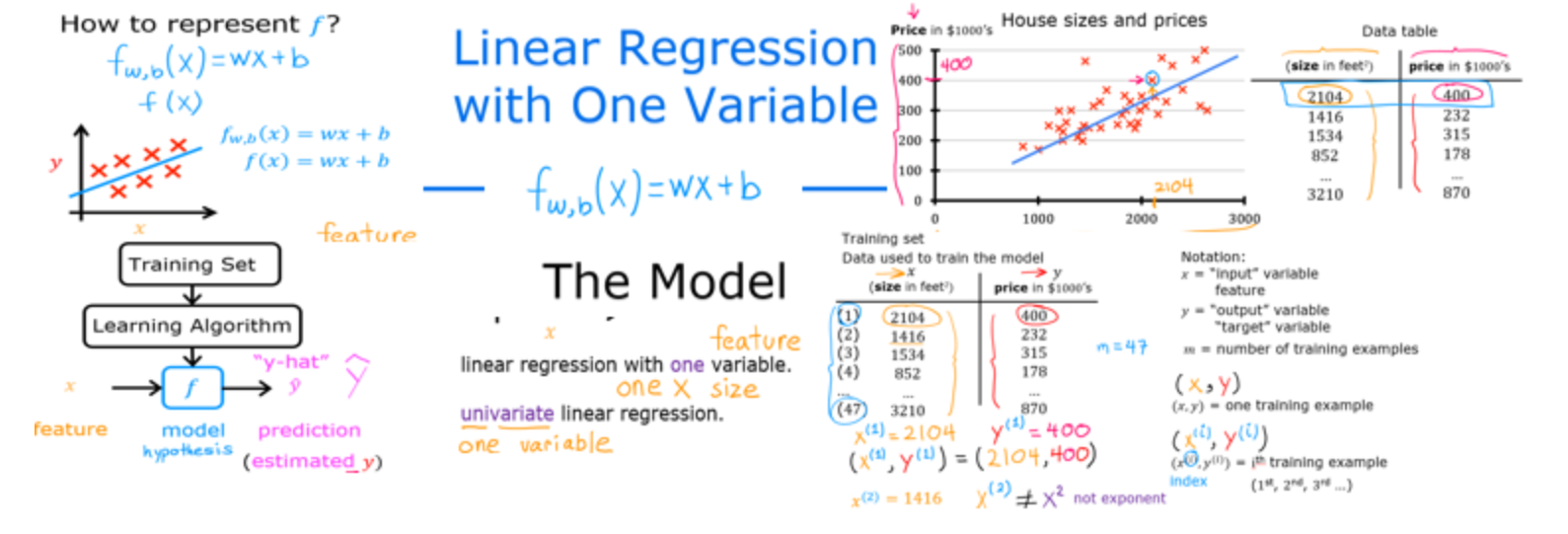
Goals
In this lab you will:
- learn to implement the model f_{w,b} for linear regression with one variable
Notation
Here is a summary of some of the notation you will encounter.
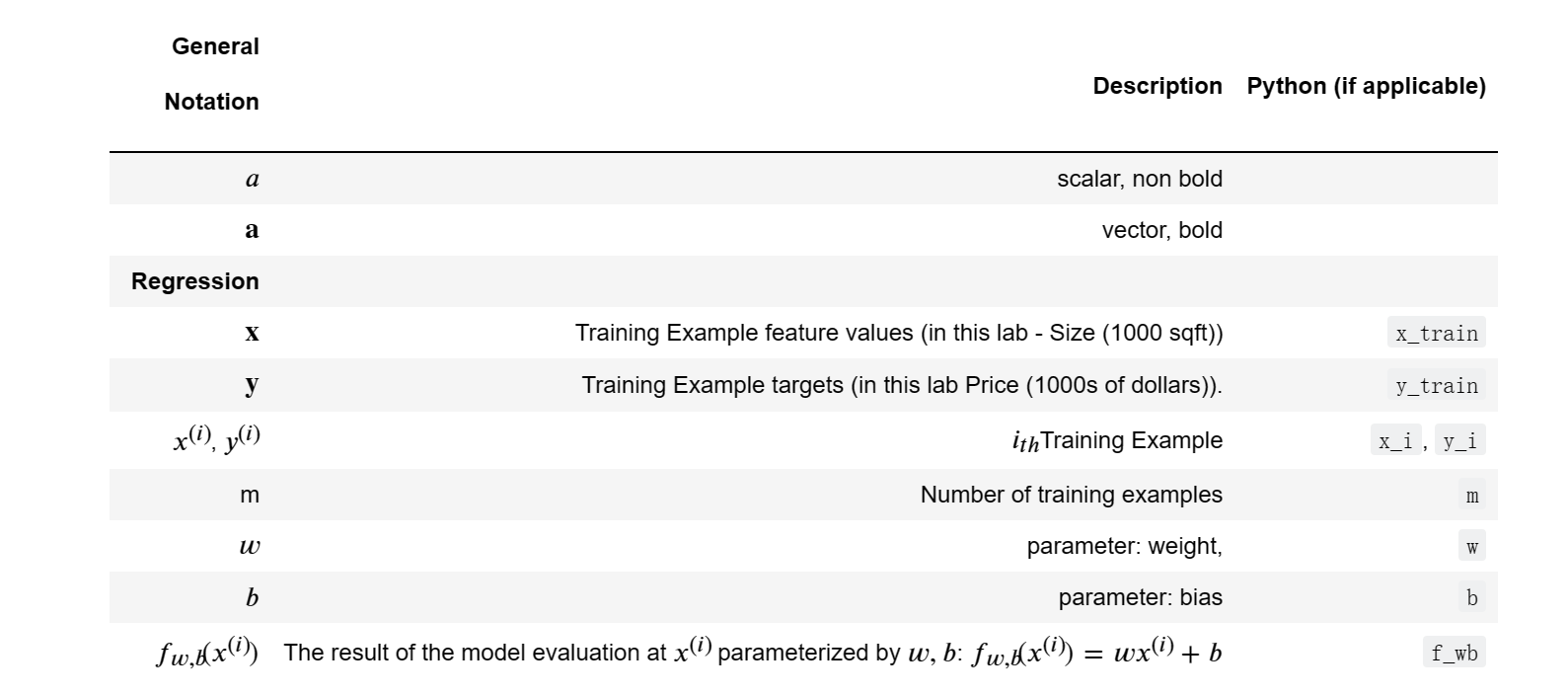
Tools
In this lab you will make use of:
NumPy,a popular library for scientific computing
Matplotlib,a popular library for plotting data
1
2
3import numpy as np
import matplotlib.pyplot as plt
plt.style.use('./deeplearning.mpstyle')
Problem Statement
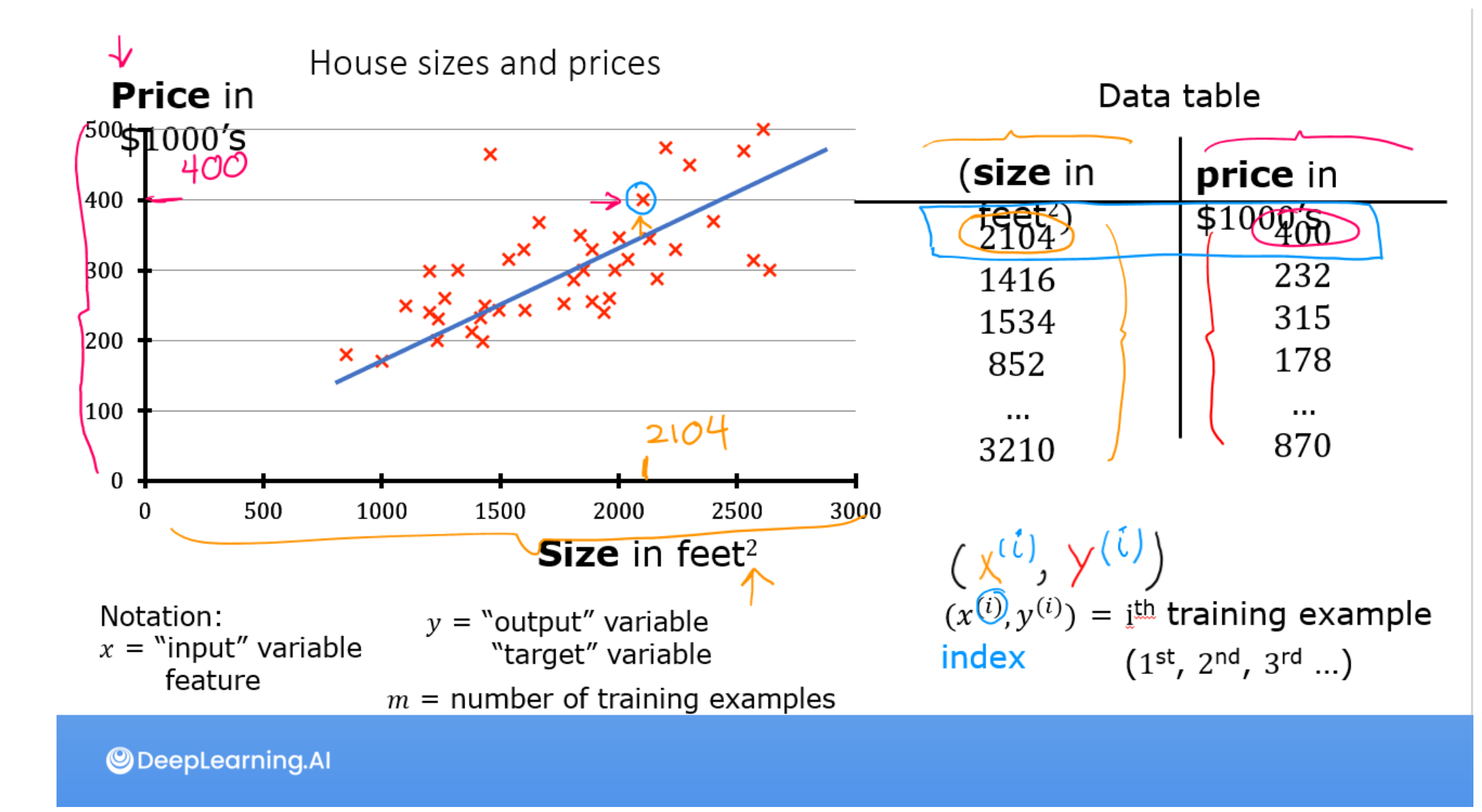
As in the lecture,you will use the motivating example of housing price prediction. This lab will use a simple data set with only two data points - a house with 1000 square feet(sqft) sold for $300,000 and a house with 2000 square feet sold for $500,000.These two points will constitute our data or training set. In this lab, the units of size are 1000 sqft and the units of price are 1000s of dollars.
| Size (1000 sqft) | Price (1000s of dollars) |
|---|---|
| 1.0 | 300 |
| 2.0 | 500 |
You would like to fit a linear regression model(shown above as the blue straight line)through these two points, so you can then predict price for other houses - say, a house with 1200 sqft.
Please run the following code cell to create your x_train and y_train variables. The data is stored in one-dimensional NumPy arrays.
1 | |
Number of training examples m
you will use m to denote the number of training examples. Numpy arrays have a .shape parameter. x_train.shape return a python tuple with an entry for each dimension. x_train.shape[0] is the length of the array and number of examples as shown below.
1 | |
x.train.shape: (2,)
Number of training examples is: 2
One can also use the Python len() function as shown below.
1 | |
Number of training examples is: 2
Training example x_i, y_i
You will use (x(𝑖), y(𝑖)) to denote the 𝑖(th) training example. Since Python is zero indexed, (x(0), y(0) is (1.0, 300.0) and (x(1), y(1) is (2.0, 500.0).
To access a value in a Numpy array, one indexes the array with the desired offset. For example the syntax to access location zero of x_train is x_train[0]. Run the next code block below to get the i(th) training example.
1 | |
1 | |
Plotting the data
You can plot these two points using the scatter() function is the matplotlib library,as shown in the cell below.
- The function arguments marker and c show the points as red crosses(the default is blue dots.)
You can use other functions in the matplotlib library to set title and labels to display.
1 | |
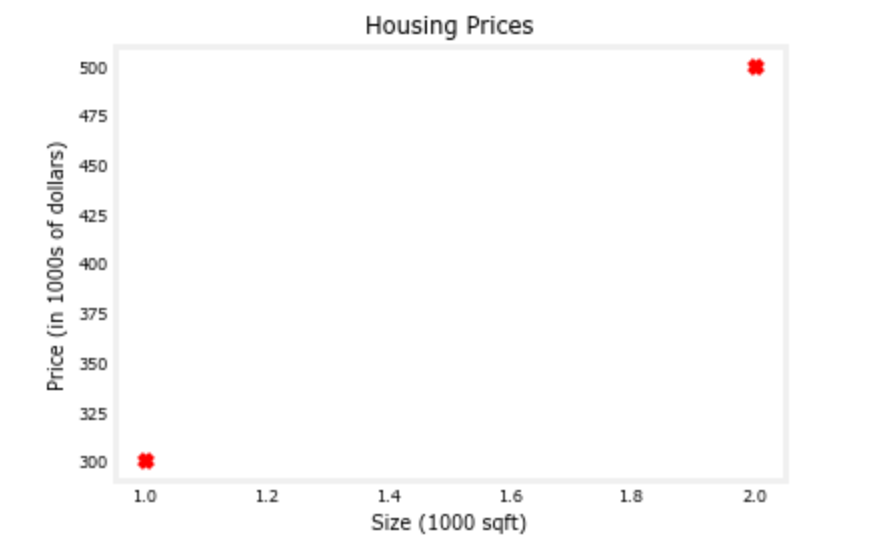
Model function
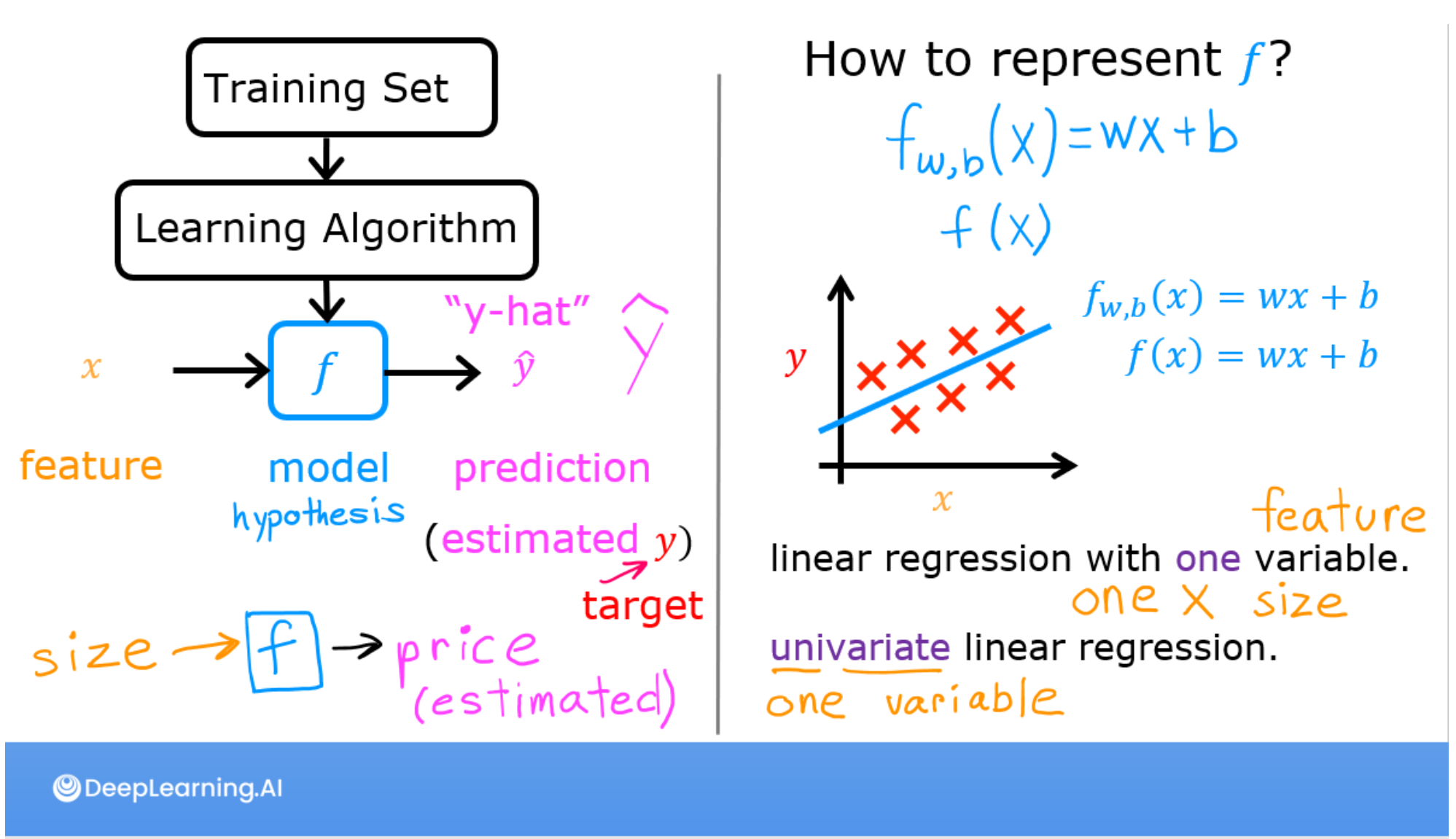
As described in lecture, the model function for linear regression (which is a function that maps from x to y)is represented as

The formula above is how you can represent straight lines - different values of w and b give you different straight lines on the plot.
Let’s try to get a better intuition for this through the code blocks below. Let’s start with w = 100 and b =100.
Note: You can come back to this cell to adjust the model’s w and b parameters.
1 | |
1 | |
Now,let’s compute the value of f_{w,b}(x^i) for your two data points. You can explicitly write this out for each data poins as -
for x(0),f_wb = w * x[0] + b
for x(1),f_wb = w * x[1] + b
For a large number of data points, this can get unwieldy and repetitive. So instead, you can calculate the function output in a for loop as shown in the compute_model_output function below.
Note:The argument description (ndarray (m,)) describes a Numpy n-dimensional array of shape (m,). (scalar) describes an argument without dimensions, just a magnitude.
Note: np.zero(n) will return a one-dimensional numpy array with n entries
1 | |
Now let’s call the compute_model_output function and plot the output.
1 | |
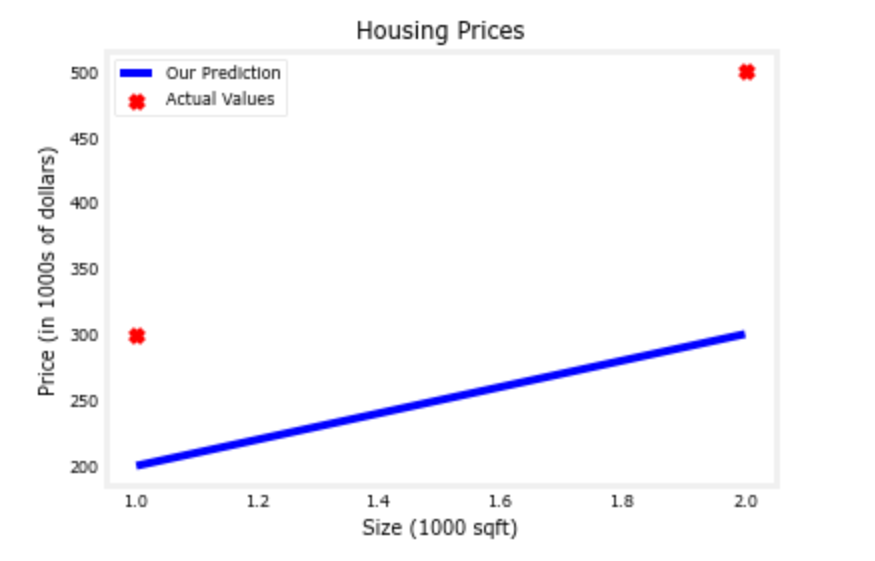
As you can see, setting w = 100 and b = 100 does not result in a line that fits our data.
Challenge
Try experimenting with different values of w and b. What should the values be for a line that fits our data?
Tips:
You can use your mouse to click on the triangle to the left of the green “Hints” below to reveal some hints for choosing b and w.
Hints
Prediction
Now that we have a model, we can use it to make our original prediction. Let’s predict the price of a house with 1200 sqft. Since the units of x are in 1000’s of sqft, x is 1.2.
1 | |
1 | |
Congratulations!
In this lab you have learned:
- Linear regression bulids a model which establishes a relationship between features and targets
- In the example above, the feature was house size and the target was house price
- for simple linear regression, the model has two parameters w and b whose calue are ‘fit’ using training data.
- once a model’s parameters have been determined, the model can be used to make predictions on novel data.
参考资料
https://www.bilibili.com/video/BV1Pa411X76s?p=5&vd_source=3ae32e36058f58c5b85935fca9b77797
本博客所有文章除特别声明外,均采用 CC BY-SA 4.0 协议 ,转载请注明出处!